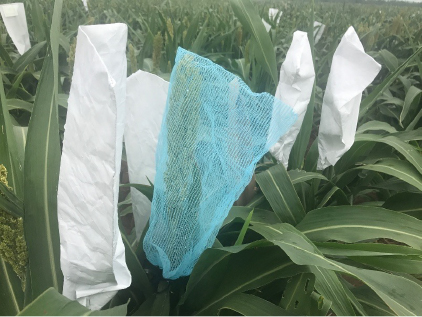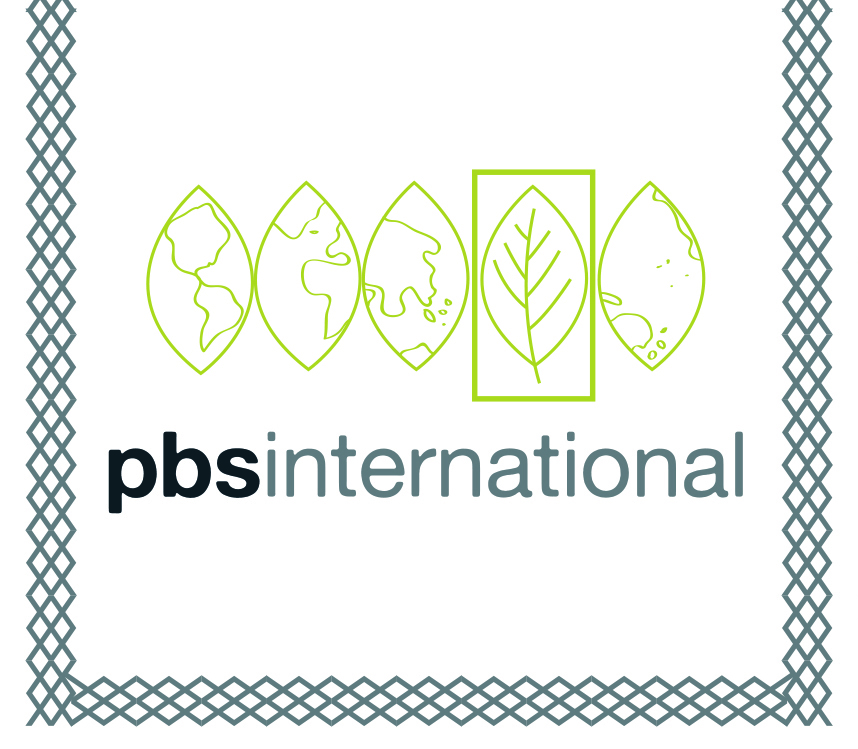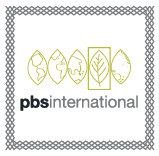Sorghum is an ancient grain that has been harvested for thousands of years. Today, sorghum growers are faced with a multitude of challenges that threaten crop yields. As demand increases for this versatile crop, we support sorghum breeding programmes around the world with pollination control products to help growers to mitigate some of these challenges.
In this blog, we take a deep dive into the world of sorghum – to explore why it’s such an important crop, the challenges faced by sorghum growers, and how to overcome them.
Why is sorghum such a popular crop?
Sorghum is a grain crop that derives from the grass family, or poaceae, and is the fifth most produced grain globally.1 Sorghum has been bred to develop bigger grains, ideal as both a human food source and for animal feed. It is also being increasingly recognised that its grains and biomass are an energy source, with some sorghum growers focusing efforts on breeding sorghum for bioenergy.
Against the backdrop of changing climate conditions, sorghum is also proving its worth because it’s a hardy plant that can withstand drought-like conditions. This makes it ideal for geographies facing rising temperatures making other cereal crops less suitable or less predictable.
Where is sorghum grown today?
As a crop which thrives in regions with higher temperatures, sorghum originates from Africa and Asia, and makes up a large part of the indigenous diet in these regions. However, due to its resilience in hotter climates and with reduced rainfall, sorghum is increasingly being grown in geographies such as Australia and the Americas. Here it is less likely to be used as food for humans, and research is ongoing into other uses of sorghum, and how best to breed sorghum for new applications such as biomass for bioenergy and feed for livestock.
What are the challenges with sorghum breeding?
Despite its huge potential, sorghum crops are not without their challenges, so breeders are working on new and improved varieties, which involves controlled crosses of parent plants. At present, many sorghum growers use paper bags to protect the panicles of these sorghum plants from pollen contamination and damage.
However, sorghum grains are particularly delicious to birds, who – especially in drought conditions – quickly learn that the paper crossing-bags covering the panicles can be torn open to reveal the grains. This makes bird damage to pollination paper bags a major problem and in some years can decimate the seeds available to the next year of a breeding programme. Sorghum breeders must therefore decide how to mitigate the impact of bird damage, but how bad the damage will be in any given year is hard to predict. Some years, bird damage could cost a breeder 70% of their seeds, while the following year the plants may be left untouched. Breeders must therefore decide whether to invest more money into crossing more plants – which is labour-intensive and therefore expensive – or whether to gamble and run the risk of losing a significant portion of their crosses, limiting the pace of the breeding programme’s progress.
Another major challenge is grain mould. As a crop that doesn’t require a lot of moisture to grow, excess rainfall can increase the risk of mould forming on sorghum grains. This may be especially common when sorghum is grown in sub-optimal weather conditions (e.g. the rainy season) in an attempt to complete more breeding cycles in a year. Not only does mould limit the amount of quality seed available to progress the breeding programme, it is also linked to an increased concentration of zinc in the grains,2 which may distort the nutritional characterisation of varieties.
A major challenge for sorghum breeders is to manage the heat levels around the kernels, to protect them. Too much heat and the kernels struggle to develop, so it is important that the ambient temperature can be controlled to enable better phenotype selection for starch and protein.
Heat management can also be useful for sorghum breeders who need to extend the growing season for some varieties (which do not flower at the same time). Research is currently underway to examine whether pollination control tents can extend the growing season for specific varieties of sorghum by heat retention, offering frost tolerance to enable a longer season for staggered planting of different varieties.
Finally for some growers the colour of the grains is an important characteristic, and one which the breeding programme is selecting for. The pollination bag affects the amount of light and wavelengths of light reaching the grains as they ripen. This makes selecting for a particular grain colour phenotype especially difficult. It appears that flavour is a colour-based trait, for example the green colour in sorghum likely indicates accumulation of metabolites that impact flavour (current research is underway). It is possible to look at the grain chemistry using the panel in pollination bags to review cross pollination, and potentially even identify and select genes with less cross pollination.
How can breeders mitigate against birds and mould?
While breeders can aim to address the challenges of bird and mould damage by increasing crosses to accommodate more sorghum plants, this can be labour- and time-intensive, in addition to a greater financial strain on the budget. Another solution to addressing the challenge posed by bird damage is by replacing the paper bags with fabric bags once the grains have formed, making it harder for birds to tear through the paper. This however also increases labour requirements, as breeders must revisit the plants to replace the paper bags with fabric coverings at the necessary growth stage.

Figure 1: An example of the paper bags and fabric bags that are commonly used by sorghum growers to manage pollination control and mitigate bird/mould damage.
PBS International bags offer a more convenient solution for sorghum crops. Made using our proprietary duraweb® nonwoven material, PBS International bags have been proven to protect sorghum plants against bird damage. Unlike paper bags which are then replaced with fabric bags (as pictured in figure 1), our nonwoven 2D42 SG1 bag offers an all-in-one solution that stays on the panicle throughout the breeding cycle (figure 2).

Figure 2: An example of PBS International nonwoven bags being used in sorghum growing.
Breathability is also a key feature of nonwoven materials: our duraweb® material is extremely durable, made up of randomly laid fibres that have been bonded together, which makes it harder for pollen particles to pass through. The result of this is that contained sorghum panicles are protected against tearing and pollen contamination, but sunlight and air can pass through the bag to the grain. Compared with paper bags, this improves breathability and allows UV to penetrate, which reduces discolouration in the sorghum grains. It also reduces the risk of mould incidence, with panicles in bags showing less mould problems than those grown without a bag.
Equally, the nonwoven bags provide better breathability and ambient heat environment for grain chemistry, by protecting the kernels in development.
How have PBS International bags been trialled for sorghum?
PBS International pollination control bags have been tried and tested in the field for sorghum against control plants without a bag, and traditional paper bags, and found to offer significant benefits to sorghum breeders.
Gaddameedi et al evaluated the efficacy of PBS International selfing bags during the rainy season in India, reviewing how nonwoven bags performed in wet conditions against traditional paper bags. This study found that nonwoven bags, particularly those made using our duraweb® SG1 material, provided ‘the best option for no bird damage, high resistance to grain mould, and higher seed weight, intactness, and ease of handling’.
Schaffert et al has also published two papers evaluating the performance of PBS International sorghum bags against other products. Both papers, published in 2016 and 2018, recommended the use of nonwoven duraweb® pollination bags over traditional paper bags, citing that nonwoven materials ‘virtually eliminate’ the risk of bird damage, resulting in higher total panicle weight, total grain weight, and average seed weight across three different types of sorghum compared to traditional paper bags. The 2018 paper also highlighted that, if correctly sterilised and stored, PBS International bags can be reused the following season4, offering significant cost benefits for sorghum breeders.
Where to purchase PBS International bags for sorghum
Purchasing PBS International bags for sorghum growing has never been easier. Thanks to the recently reconfigured production of our 2D42 SG1 bags, sorghum breeders can now purchase PBS International bags and enjoy lower prices, enhanced availability, and shorter lead times in 2025. The new manufacturing process also means that all 2D42 SG1 bags for sorghum now go through our duratrace™ tracking protocol, ensuring an extra layer of traceability and quality control for your order and shipment.
For sorghum growers who are looking for pollination bags that offer…
- Benefits for germplasm maintenance3
- Potential for repeat use if cleaned and stored correctly4
- Improved hybridisation process control
- Improved generation advances in sorghum
- Minimised humidity and regulated temperatures inside the bag
- Reduced contamination, from unwanted pollen or other external factors
- Increased seed yields
… Our 2D42 SG1 bags are available to order today. These bags are also suitable for millet crops.
To place an order, please contact our sales team.
For any enquiries, please submit an enquiry form and a member of our team will get back you.
H3: References:
- Mundia, C. W., Secchi, S., Akamani, K., & Wang, G. (2019). A Regional Comparison of Factors Affecting Global Sorghum Production: The Case of North America, Asia and Africa’s Sahel. Sustainability, 11(7), 2135. https://doi.org/10.3390/su11072135
- Are, A., Gaddameedi, A., & Phuke, R. (2016). Evaluating the efficacy of synthetic fibre pollination control bags in sorghum during the rainy season. International Journal of Plant Breeding and Genetics, 11, 39–54. https://doi.org/10.3923/ijpbg.2017.39.54
- Schaffert, R., Virk, D., & Senior, H. (2016). Comparing pollination control bag types for sorghum seed harvest. Journal of Plant Breeding and Crop Science, 8, 126–137. https://doi.org/10.5897/JPBCS2016.0580
- Schaffert, R., Virk, D., & Senior, H. (2018). Are nonwoven synthetic pollination bags a better choice for sorghum breeding? Journal of Plant Breeding and Crop Science, 10, 58–68. https://doi.org/10.5897/JPBCS2017.0704


